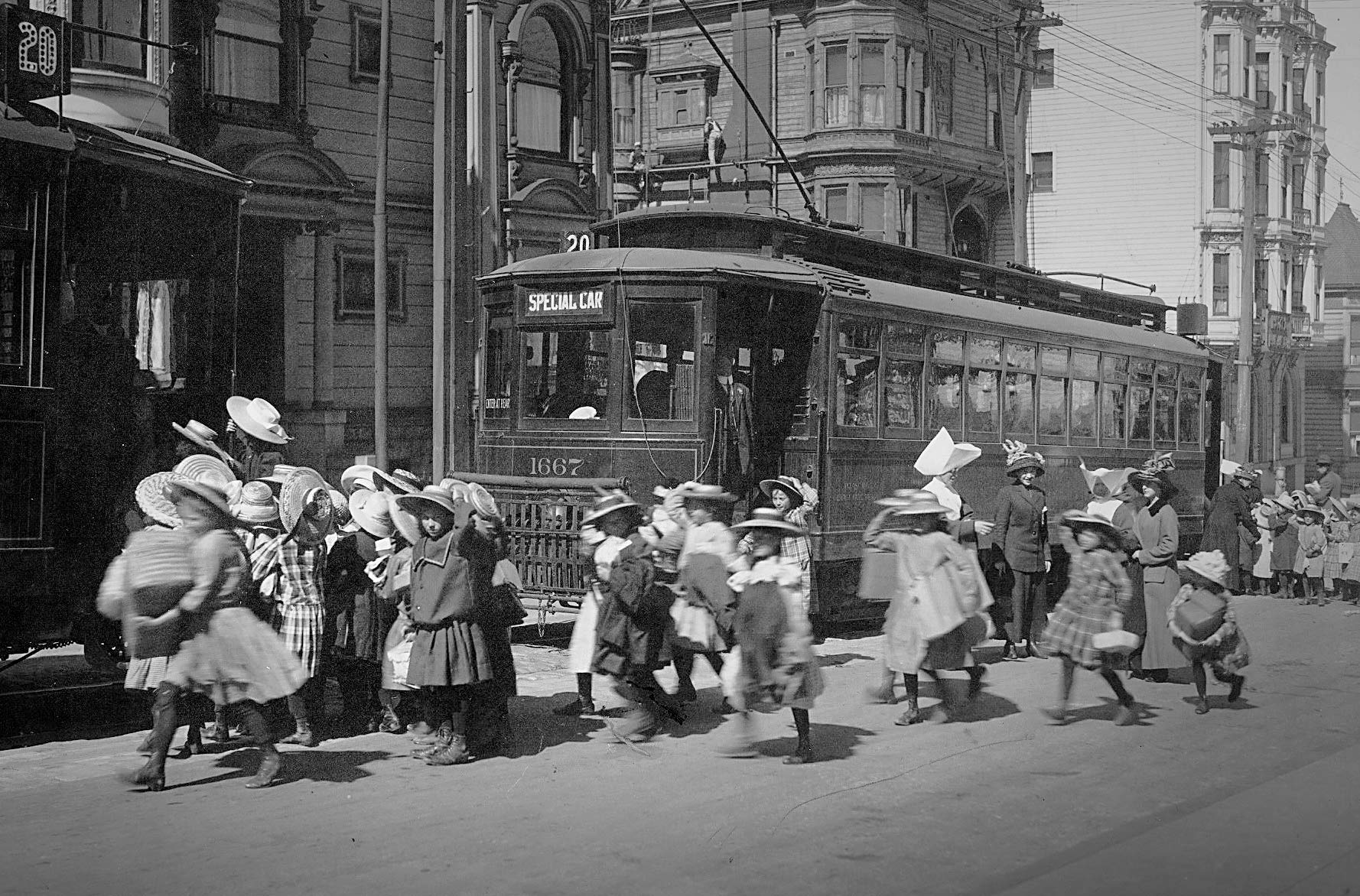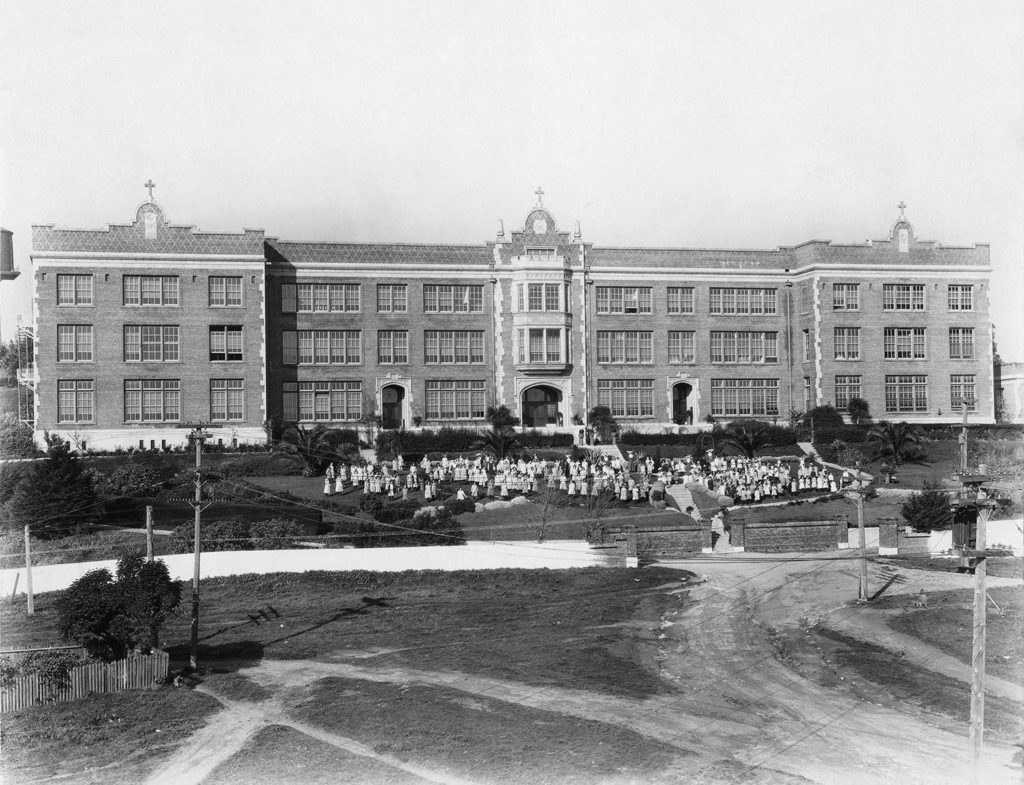San Francisco
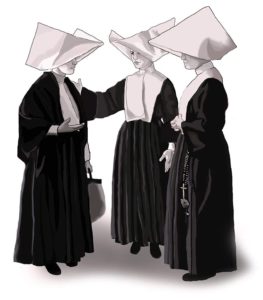
The first Sisters headed west from Emmitsburg, MD, and arrived in August 1852
San Francisco was a small village known as Yerba Buena of approximately 50 inhabitants in 1844. Upon the discovery of gold in 1848, the settlement became the heart of the mining activities and this brought many adventurers into the area. By 1850, San Francisco had a population of 25,000.
In 1850, California became the 31st State of the Union. That same year, Joseph Alemany became Bishop of Monterey, California. In 1852, while in Baltimore, he requested Sisters for San Francisco. The Council of the Daughters of Charity in Emmitsburg decided to send sisters to California. Seven courageous Sisters were named for the distant mission of San Francisco. They were Sisters Francis McEnnis, Corsina McKay, Ignatia Green, Honorine Goodman, Fidelis Buckley, Sebastian Doyle, and Bernice Williams.
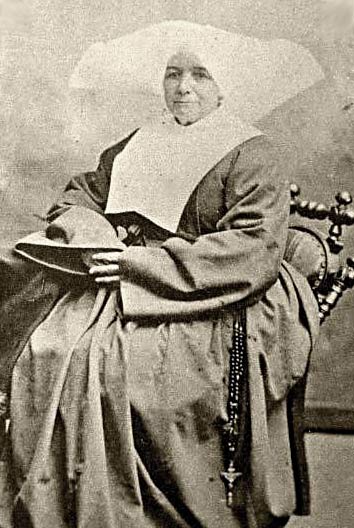
Sister Francis McEnnis
At this time, the railroads did not crisscross the country and a journey to California could only be made by stage or steamer. The journey from Emmitsburg to San Francisco was not only long and weary but also dangerous. These seven sisters boarded a steamer and sailed from New York to Panama on July 6, 1852. When they arrived on the Atlantic side, it was necessary to cross the Isthmus on mules. The road was narrow in places and difficult for the animals to find their footing. After they had crossed the Isthmus and arrived on the Pacific side, two sisters, Honorine and Ignatius, died of cholera and were buried in Panama City. After losing their companions and meeting many delays, the five survivors boarded another steamer and sailed on to San Francisco where they arrived on August 18, just 42 days after their departure from New York.
It had been a difficult journey and they were relieved to reach its end, but many more difficulties were to face them in this new rugged country. Yet they were to draw great strength and new energy from their adventure. Sister Francis McEnnis was the leader of this community of Sisters in San Francisco. Here, they established an orphanage and school and later an infant home and infirmary. The Daughters of Charity have provided more than 160 years of continuous service to the people of San Francisco.
Early Years in San Francisco
Market and Montgomery
The carriage brought the Sisters to their new home, the “old brown house” at Market and Montgomery Streets in the area of San Francisco known as Happy Valley. The Sisters had lived in the more established cities of the east, Boston, Philadelphia, Baltimore, and were now about to experience life in a frontier city. When the Sisters first rode up Market Street they saw nothing but sand and a “destitute looking shanty.” Inside the picture of desolation was completed; there were no chairs, only wooden stools, and upstairs, seven cots without sheets or blankets. They were plagued by fleas and inconvenienced by sand and water coming into the “old shanty.” By the mid-1870s, this same lot on Market and New Montgomery Streets that once housed the “destitute looking shanty” now housed the grand Palace Hotel where visitors lived with elegance and luxury and where celebrities from around the world were entertained.
The orphanage began before the Sisters arrived in San Francisco as they had already assumed the care of an orphan child, Nellie, aboard the Ohio when her mother died. Soon after their arrival, the first orphan from San Francisco was received. Soon many other motherless children joined them. Then, six weeks after the orphanage, the girls’ school began. Living and working conditions were cramped within the walls of the “old brown house” as it was a Church on Sundays, a school on weekdays, and an orphanage with dormitories at night. The early weeks, months, even years were difficult times.
The journey to California, especially the time in Panama, had weakened the Sisters physically and it was many months, even years before they recovered their health, and some never fully recovered. The cramped conditions at the “old brown house” were somewhat relieved after the first two years when the church moved to its new building next door on Market Street (September 1854). Now, only the orphanage and school were housed within these walls, and then a few months later (December 1854) conditions were further improved when a new orphanage and school building went up next to the “old brown house.” By this time the number of orphans and scholars had greatly increased.
Soon five other Sisters journeyed from Emmitsburg to San Francisco (March 1855) just after the Panama Railroad was completed across the Isthmus. Now there were more Sisters to care for the orphans and teach the scholars. Within the next three years still, other Sisters made the same journey, so now there were even more Sister-caregivers and Sister-teachers to meet the needs of an increasing number of orphans and scholars. The orphans, boarders, and day scholars were all housed in the same building and when the numbers swelled to almost 400, conditions again became cramped. A new schoolhouse was needed for the 300-day scholars and was finally built on Jessie Street (in 1859) just in the back of the orphanage. It was called St. Vincent’s School.
Around the same time, the Sisters decided that they would manage the orphanage and school by themselves. They were not satisfied with the gentlemen providing the financial management rather than themselves. They informed the gentlemen of their decision and became themselves the financial managers of the orphanage and school as well as the caregivers and educators of the children. In August 1858, the Sisters formed a legal corporation, named the Roman Catholic Orphan Asylum, and they may have been the first group of women in California to incorporate. They did this in order to protect their orphanage and school property from becoming Church property as these were days before the lines of ecclesiastical jurisdiction were clearly drawn. Property ownership was a contentious issue that persisted over a 20-year period.
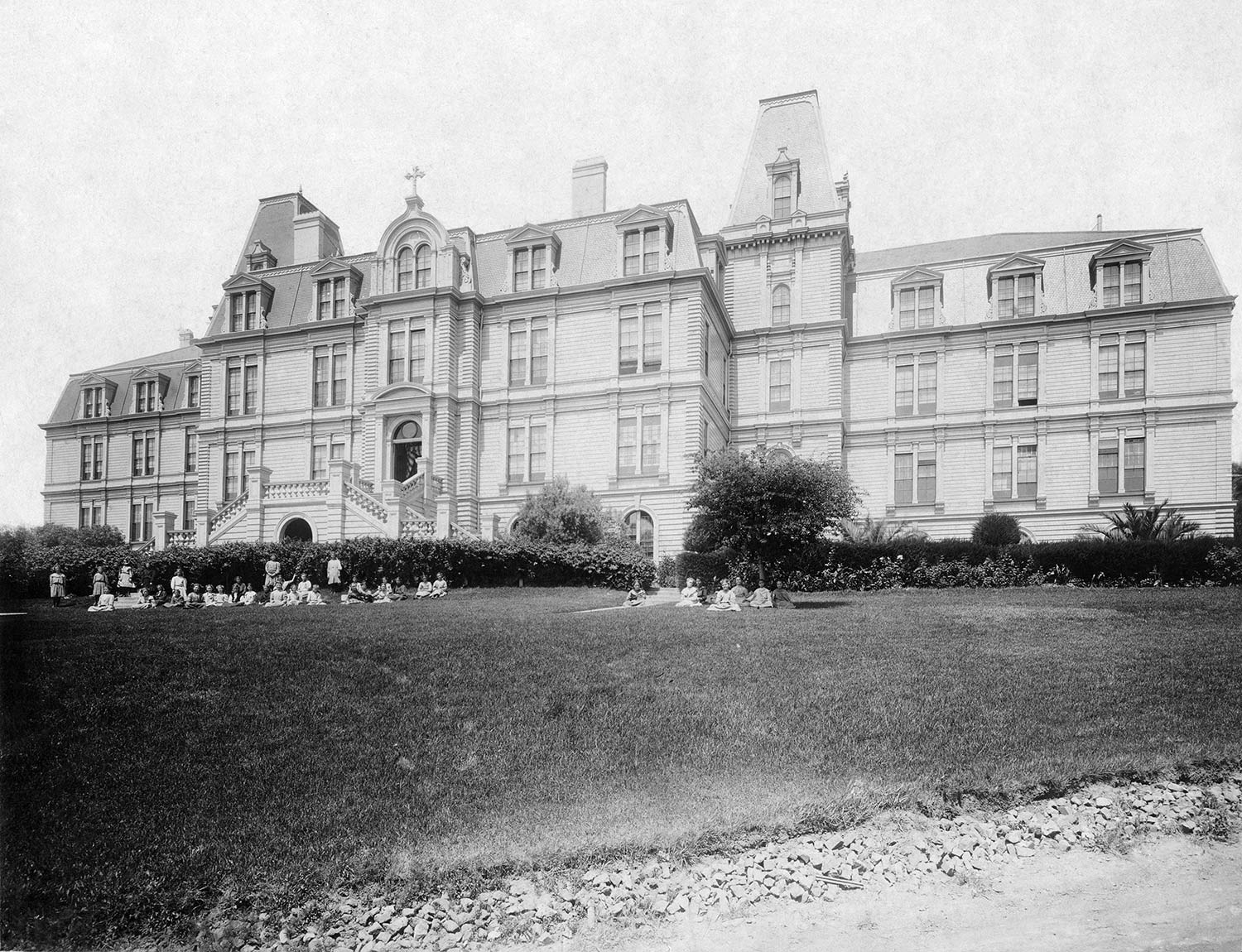
Mount Saint Joseph Infant Asylum 1873
In time, the neighborhood of Market and Montgomery Streets became the business area of San Francisco and was no longer a suitable location for an orphanage for very young children. So, the Sisters purchased property four miles away in a place called South San Francisco, in the Silver Terrace Area. Here they began building an orphanage for infants and very young children (Mount St. Joseph Infant Asylum). In the meantime, it was necessary to construct additional buildings on the Market Street property to accommodate the increasing number of older children coming into the orphanage
The Sisters had already decided on the location for the new orphanage. It was to be built on their property in the Silver Terrace area of South San Francisco where Mount St. Joseph Infant Asylum was already located. They began construction on the new building in 1869.
In 1873, approximately 300 orphans moved from Market and Montgomery Streets in downtown San Francisco to the Silver Terrace area of South San Francisco. The San Francisco Trolley Company provided door-to-door transportation for the orphans and Sisters while many individual people made their carriages and carts available to move furnishings and belongings. As a result, the move was completed all in one day. The orphanage was now located a high point in South San Francisco and was called Mount St. Joseph (legal name remained the Roman Catholic Orphan Asylum). Mount St. Joseph and Mount St. Joseph Infant Asylum, separate works in separate buildings, were now located on the same property in Silver Terrace. For the first time the orphanage and school, after so many years of close proximity, were now separated by a distance of four miles. The orphans were now in South San Francisco while the day scholars were still at St. Vincent’s School on Jessie Street in San Francisco. Later in 1873, the day scholars moved into their new school building on Mission Street, a few blocks from Jessie Street.
Beyond Market and Montgomery
By the 1880s, the orphanage and school were separated by three or four miles. Mount St. Joseph and Mount St. Joseph Infant Asylum were located in the Silver Terrace area South of San Francisco. St. Vincent’s School was located on Mission Street in the business district of San Francisco.
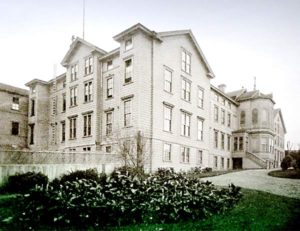
St. Francis Technical School
In 1886, the Sisters at Mount St. Joseph opened a “trades school” for their older girls. The school was called St. Francis Technical School and it was located on Geary and Gough Streets in San Francisco. The following year (1887), the Sisters at St. Vincent’s School for girls staffed a new school for boys. This new school was called St. Patrick’s Boys’ School and it was located a few blocks away on Everett Street.
The five Pioneer Sisters lived long and fruitful lives of service well into their 60s and 70s, at a time when life expectancy was still in the 40s.
Sister Frances lived to the age of 66, Sister Sebastian to the age of 64, Sister Fidelis to 66, Sister Corsina to 68 and Sister Bernice to 69.
Sisters Frances, Sebastian, and Fidelis were all buried in the old Mount Calvary Cemetery in San Francisco, and later their remains were moved to Holy Cross Cemetery in Colma.
The ministries that the Sisters established in the summer of 1852 are long-lived, continuing to the present day. As later generations of Sisters struggled to meet the changing needs of society, the original orphanage and school relocated and were renamed, providing new services to meet the new needs of society. Both establishments continue today, the orphanage as Epiphany Center (Mt. St. Joseph-St. Elizabeth) and the school as Sacred Heart Cathedral.



